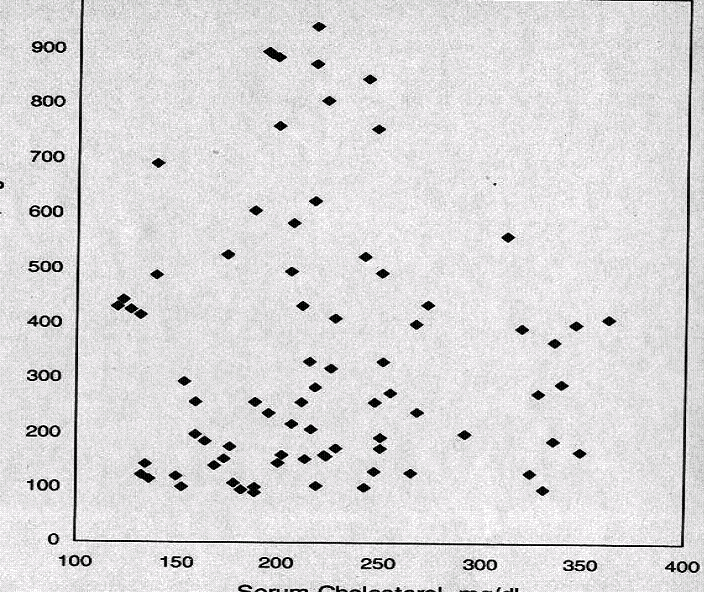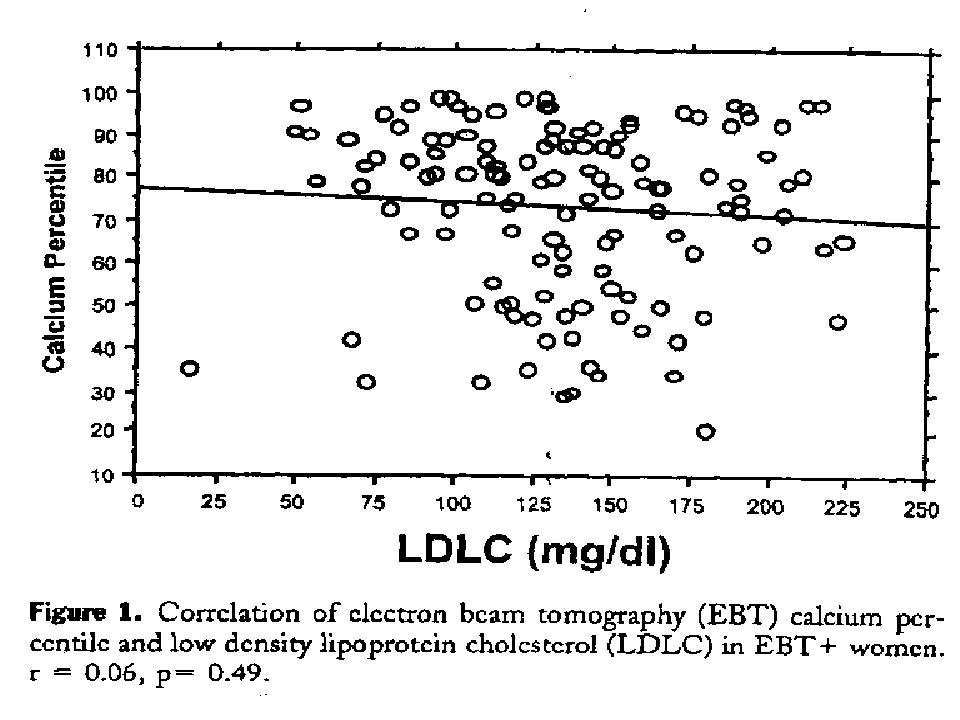Guideline insanity
November 2013
Guidelines on the prevention of cardiovascular disease are published again and again from various expert committees. In my August newsletter I told you about those from the International Atherosclerosis Society. Recently new ones were published by the American College of Cardiology (ACC) and the American Heart Association (AHA). They call them “The New Guidelines on the Treatment of Cholesterol to Reduce Atherosclerotic Cardiovascular Risk in Adults”
Treatment of cholesterol??? Is cholesterol a disease? Don´t these so-called experts know that cholesterol is one of the most important molecules in our body? Don´t they know that we use that molecule for producing cell walls, nerve fibres, sex and stress hormones, bile and vitamin D? Don´t they know that it is so important that all cells are able to produce it themselves? Don´t they know that we produce 3-5 times more cholesterol than we eat? Don´t they know that our brain is unable to function probably without its steady production of this molecule?
To reduce atherosclerotic cardiovascular disease? Don´t they know that people with low cholesterol become just as atherosclerotic as people with high? Take for instance a look at the following diagrams. The first one shows the association between cholesterol in the blood and the degree of atherosclerosis in people who had died from an accident published 77 years ago by Landé & Sperry (Arch Pathol 1936;22:301-12). (The vertical axis: amount of cholesterol in the aorta; the horizontal axis: serum cholesterol; mg/dl). As you see no association whatsoever.

The next one is a modern study of the arteries of the heart in 304 healthy women using electron beam tomography (Hecht & Superco). With this technique it is possible to measure the degree of calcification of the arteries from the outside. Again there is no association whatsoever. The arteries of women with low cholesterol were just as calcified as the arteries of women with high.

Therefore it should not be a surprise that, as they wrote, “the Expert Panel was unable to find evidence to support titrating cholesterol-lowering drug therapy to achieve target levels of cholesterol”. Or said in another way: The level of cholesterol in the blood has no importance.
We have known that from the very beginning. There is not only a lack of an association between cholesterol and atherosclerosis; there is no association either between the degree of cholesterol lowering and the outcome. The small benefit of statin treatment is the same whether cholesterol is lowered a little or very much. No trial has ever shown anything else.
But obviously the experts haven´t understood it themselves, or have they? It is difficult for researchers who receive large amounts of money from the drug companies, and several of the authors do that, to admit that what they have told their colleagues and the population for many years is wrong. I am confident that if they dare to do that, their names are taken away from the industry payrolls immediately.
Instead they present a calculator with which it is able to see who should be recommended statin treatment. They claim that any person with a risk of achieving cardiovascular disease that is higher than 7.5% during the next ten years should be prescribed a statin drug. And the information used by the calculator includes the person’s cholesterol!
With the calculator you can for instance see what is considered necessary for a woman age 65 without heart disease to avoid statin treatment. She must have a cholesterol below 3.8 meq/l (150 mg/dl), an HDL-cholesterol of at least 1.0 meq/l (40 mg/dl), her systolic blood pressure must not be higher than 150 without treatment, and she must be a non-smoker without diabetes. How many women of that age do you think belong to that category?
For a man of that age it is even more difficult because his cholesterol must not be higher than 3.3 meq/l (130 mg/dl) and his systolic blood pressure must be lower than 105. I think that only a Masai warrior is able to satisfy such demands. The consequence is of course that most of adult mankind should take a statin every day for the rest of their life.
Furthermore, they say that we need not control the level of CK (creatine kinase) in the blood. CK is a molecule the concentration of which increases when muscles become damaged. Their argument is that in the statin trials very few patients suffered from muscle damage.
However, as I have mentioned before, in all trials muscle damage was recorded only if CK was ten times higher than the upper normal limit and at two subsequent occations. A relevant question is: What happens after ten or twenty years of treatment with those whose CK is “only” nine times higher? Furthermore, other researchers have found that CK may not be raised at all in statin-treated patients with muscular symptoms and muscular damage verified by a microscopic examination of their muscle tissue.
As I have mentioned several times before, independent researchers have observed that at least 25% of those who exercise now and then get muscular problems from statin treatment. And exercise is the best, cheapest and safest way to prevent cardiovascular disease.
Also diabetics are recommended statin treatmen, even those who develop that disease during the treatment. The evidence for that advice is the small benefit achieved in a few statin trials. Statin treatment causes diabetes, because they block the synthesis of insulin. Diabetes has been recorded in 3-4 % of statin-treated individuals after a few years. The question is how many have diabetes after ten or twenty years of treatment? And how many of them have lost their legs? How many have become blind? How many suffer from diabetic polyneuropathy? How many are on dialysis treatment because of diabetic kidney disease?
Luckily several researchers have warned the population. Read for instance an article by John Abramson and his coworkers in New York Times and in British Medical Journal, or “The Statin Insanity” published in Huffington Post by David H.Newman.
Others have criticized the risk calculator for overestimating the risk by 75-150%; read for instance the article in New York Times by Gina Kolata.
But the AHA and the ACC defend their guidelines and the calculator desperately: “We think we’ve done our due diligence. We have faith and trust in our investigators.”
Our due diligence? For the people or for the drug industry?
This is a relevant question because according to the organisation Integrity in Science the American Heart Association is sponsored by twelve drug companies.